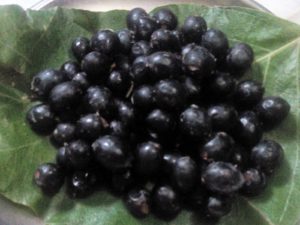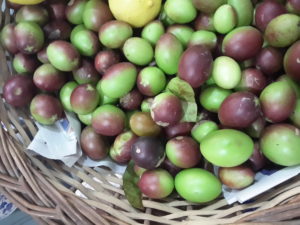All About Karvanda(karonda)
Karonda is one of the many berry-like fruits believed to originate near the Himalayas, though some botanists place the fruit’s origin to Java. Its natural range extends from Nepal to Afghanistan and encompasses several parts of India throughout that stretch.
Checking for Ripeness in Karonda
Karonda’s ripeness depends on its end use. If intended for use as a vegetable, the fruits should be plucked while still under ripe. This is apparent by the fruit’s greenish white color.
When fully ripe, no hint of white is present on the skin. These fruits are selected for canning, preserving and pickling. Some of the fruits grow dark red when fully ripe; others grow dark purple.
In its raw state, the fruit is sour and acidic with little sweetness. In its ripest phase it becomes a bit sweeter.
Nutritional Value of Karonda
A nutritional study published by the National Bureau of Plant Genetic Resources provides the following nutritional information per 100g of edible fruit:
42.5kcal
0.39-1.1g Protein (negligible)
2.5-4.63g Fat
0.51-2.9g Carbs
0.62-1.81g Fiber
21mg Calcium
28mg Phosphorous
1619IU Vitamin A
9-11mg Ascorbic Acid
Health Benefits of Karonda
–As a blood sugar stabilizer
–as a guard against liver damage.
–Biliousness
–Anemia
–Antiparasitic
–Antifungal
–Antimicrobial
–Topical wound treatment (juice)
–Skin remedy
Several scientists have studied the fruit as well:
A report in the “International Journal of Food Sciences and Technology” states karonda’s extracts show potent antimicrobial activity.
This fruit can be eaten just like that or one can try
–Karaunde chutney – cutting karondas into pieces and removing the small seeds. Place the cut fruit in a food processor
with red chilis, coriander leaves, salt and cumin. If a thinner consistency is desired, add water or lemon juice.
–Make pickled karonda by cutting the fruit into small pieces and boiling in water. After 5 minutes, remove the mix and dry. Place the dried fruit in a jar with oil, salt, and masala and store in a cool, dark place.
Go ahead Enjoy this seasonal fruit
Source:-http://theindianvegan.blogspot.in/2012/10/all-about-karonda-in-india.html









Best view you can finde , in this side of world!